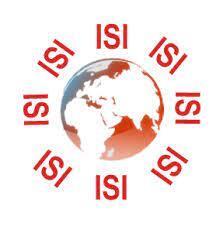Anthropogenic Factors Influencing Malaria Transmission in Ngoma District
DOI:
https://doi.org/10.62103/unilak.eajst.14.1.229Keywords:
Anthropogenic factors, Malaria transmission , Ngoma districtAbstract
Malaria continues to remain a major health problem in Ngoma district and Rwanda at large despite various measures that have been geared towards treatment and control of the disease. The present study aimed to examine anthropogenic factors influencing malaria transmission in Ngoma district. A cross-sectional survey employing questionnaires, observation, and interviews was used to collect primary data, while secondary data on the seasonality of malaria transmission were gathered from published and unpublished hospital reports and a nearby weather station. The target population included 946 community health workers, 16,521 individuals who suffered from malaria in the selected sectors, and 1 hospital person in charge of malaria. The sample size of 127 respondents was selected using the Alain Bouchard formula, and multistage, cluster, and simple random sampling techniques were deployed. The results indicated that hospital admission rates for malaria in adults were highest in 2014 at 51.0% and highest in children in 2014 at 64.6%. Hospital admission rates in adults were lowest in 2016 at 18.5% and lowest in children in 2017 at 13.2%. A positive relationship between malaria admission rates and rainfall and temperature (p = 0.001) was observed. The most common night-time outdoor activities were evening parties (Chi-squared value 184.068, p = 0.000), rated at 3.57. The primary reason for not owning LLINs was their unavailability, noted by 26.0% (p = 0.000). Irrigation for rice cultivation and slow-flowing fresh water from the extensive anastomosis of tributaries of River Kagera were identified as the most dominant malaria transmission factors (66.1%, p = 0.000). Malaria transmission was significantly associated with non-window screening (92.9%, p = 0.000). General sanitation was effective in reducing malaria transmission (55.9%). Livestock keeping had a significant impact on the increase in malaria transmission (38.6%) (Chi-square: 81.506, Std. Dev = 0.489, and p = 0.000) due to the rising mosquito density. This study validates anthropogenic factors, notably rice farming, poor housing, inappropriate bed net use, night parties, irrigation agriculture, and improper waste management, as the main factors causing malaria in Ngoma district in Rwanda.
Downloads
Published
How to Cite
Issue
Section
License
Copyright (c) 2024 East African Journal of Science and Technology

This work is licensed under a Creative Commons Attribution 4.0 International License.








